It’s that time of year again. The darkest and shortest days of the year don’t just bring about cold weather; they can also bring about significant changes in your mood and how you feel.
Seasonal affective disorder (SAD) is a real thing that affects over 10 million Americans, with another 10-20 million said to struggle with mild symptoms. (1)
If you live in a city with a true winter climate – like New York, Toronto, or London – you’re up to 10 times more likely to struggle with mild to moderate SAD. (2) Also, adolescents and young adults are more likely to be affected. (3)
Struggling to lose weight? Unable to focus? Chances are, your hormones are out of whack.
Grab Our FREE Guide To Fixing Your Hormones By Clicking Here!
Here are 11 ways to help fight off the winter blues, which for some can be very mild and others more prominent.
Why Do We Get ‘SAD’?

Experts are unsure exactly why we get seasonal affective disorder (i.e., the winter blues). Like many chronic conditions, it’s most likely a multifactorial condition impacted by changes in neurotransmitters, circadian rhythms (i.e., daily production of hormones triggered by natural light), hormones, and psychological and genetic factors. (4) [tweet_quote] SAD is likely caused by a disrupted circadian rhythm and changes in hormones.[/tweet_quote]
For example, lack of morning light negatively impacts the “feel good” neurotransmitter serotonin, and its levels have been shown to be lower during winter in those who struggle with SAD. (5) A low serotonin level is a common cause of low mood. Circadian rhythms are also delayed in the winter months, and this delay in “phase-shift” during winter months has been shown to impact the sleep hormone melatonin as well as cortisol levels, setting the stage for SAD symptoms. (6) Lack of total light time (e.g., shorter photoperiod) is another proposed mechanism, as studies show that decreased total daily sunlight exposure during winter months is associated with an increased prevalence of symptoms of depression. (7)
11 Ways to Fight off ‘SAD’
Regardless of why you get mild or significant SAD symptoms, the good news is there are plenty of diet, movement and lifestyle strategies to fight off the winter blues and help you thrive (not just survive) this winter.
Set Your Circadian Rhythm (Wake Up on Time)
Getting up at the same time every day is crucial for setting your daily circadian rhythms. Much more important than when you go to bed, getting up at the same time every day plays a fundamental role in establishing a healthy circadian pattern, which is crucial for keeping your energy levels up throughout the coldest months. (8)
Try ‘Bright Light’ Therapy
Bright light therapy is a great technique to use in the winter months when you’re rising before the sun (and you may even be in your office already when it comes up!). Light therapy has been shown to be successful for treating people with SAD, and it’s also a great choice for simply feeling more energetic throughout the dog days of winter. (9)
Eat Breakfast Every Day
Not only is a consistent “wake time” key for circadian rhythms and fighting off SAD, so is eating a regular breakfast. Busy days lead to a lot of people eating dinner later at night and closer to bedtime. This can have a negative impact not only on quality of sleep, but also on your level of hunger the following morning. Skipping breakfast is a sure-fire way to throw off circadian patterns, so if you find yourself missing meals throughout the winter, shift your focus back to a higher protein, higher fat, lower carb breakfast to reset circadian timing. (10)
[tweet_quote] Don’t skip breakfast. It’ll only make your SAD symptoms worse this winter.[/tweet_quote]
Get Outside (in the Morning)
Exposure to outdoor light is crucial for a sharp brain and healthy hormone patterns. Even on a cloudy day, natural outdoor light provides 100,000 lux of light intensity, compared to only 10,000 lux by even the brightest indoor lights. (11) This truly highlights just how important it is to get outside to help boost your brain and circadian patterns and get set for the day. Unfortunately, most people go from their warm house to their warm car to their warm office without stepping outside into the frigid winter air. Get outside for 5-15 minutes by parking further away from your office or finding a new coffee shop a few blocks over.
Don’t Overconsume Caffeine
It’s natural when you’re tired, rundown and struggling to stay sharp to reach for another cup of coffee. If you struggle with SAD symptoms, make sure to not to overcaffeinate as a “Band-Aid” solution to low energy. Excessive caffeine intake from coffee, black tea or pre-workout supplements can lead to symptoms like brain fog, irritability, and constant fatigue, and if you indulge in the afternoon, it can also impair deep sleep. (12) As a general rule, keep your caffeine intake to before noon, and if you’re really struggling, you should take a holiday from caffeine for at least 4 days.
[tweet_quote] Caffeine is a band-aid solution to low energy in the winter. Need your daily cup? Have it before noon.[/tweet_quote]
Add Extra Vitamin D
Low vitamin D levels are associated with symptoms of the winter blues. (13) While Paleo-friendly foods like egg yolks, bacon and mushrooms all contain some vitamin D, the levels are not adequate for those living in cities with a true winter climate. Aim for 2,000 IU daily of supplemental vitamin D throughout the winter. You can increase to 5,000 IU per day if your SAD symptoms are more pronounced (but make sure to get your vitamin D levels tested regularly by your doctor).
Take ‘Power Naps’
Most people think you need to completely fall asleep to reap the benefits of a midday nap. Not true. Even a light, 20-minute “power nap” with eyes closed allows your brain to increase regenerative alpha-brain wave activity, helping to reboot your brain and keep it sharp and productive in the afternoon (without desperately seeking another caffeine boost!). (14)
Don’t Overconsume Alcohol
It can feel relaxing to have a glass of wine, bottle of beer, or cocktail after a long and stressful day. Unfortunately, drinking too much or too close to bedtime is bad news for your winter blues. Alcohol can inhibit deep, regenerative sleep if you overconsume or have a “night cap” before bed. (15) Limit your alcohol intake to a few days per week, and if you suffer from significant SAD symptoms, your best bet is to omit it completely for 2-8 weeks.
Eat Dinner Early
Late night eating can throw off your circadian rhythms. While not a big deal if you’re feeling your best and “killing it” at the gym and in the office, it becomes a real problem if your energy and mood are low. As mentioned above, late night eating curbs your appetite for breakfast, a major mistake when trying to reboot your circadian rhythms. Try having a smaller dinner, a quick protein shake, or simply skip the late night dinner and eat a bigger breakfast to get yourself back into a solid routine.
Avoid ‘Blue Light’ at Night
I’m sure you’ve already heard this a million times already. But I’m going to tell you again because it’s so important: avoid “blue light” from your phone or tablet at night. It effectively tells your brain that it’s morning and negatively impacts deep sleep, even if you don’t struggle to fall asleep or stay asleep through the night. The best fix: wait until morning to check your Facebook page or Instagram account, as the blue light will serve as a proxy for sunlight, helping to get your circadian rhythms in tune for the day.
Stay Connected
In some people, the struggle with SAD can be quite significant. Make sure to stay connected with friends and share how you’re feeling. If symptoms of low mood are chronic and persistent, or if you have thoughts about suicide or self-harming, visit your doctor for support or call the National Suicide Prevention Hotline at 800-273-TALK (8255).
Seasonal affective disorder is related to the change in seasons; it can affect some mildly and others more significantly. Get outside, expose yourself to outdoor light, add supplemental vitamin D, and keep your circadian rhythms on point to mitigate the impact of the winter blues so you can thrive (and not just survive) this winter.
(Read This Next: The Different Types of Depression and How to Start Healing)


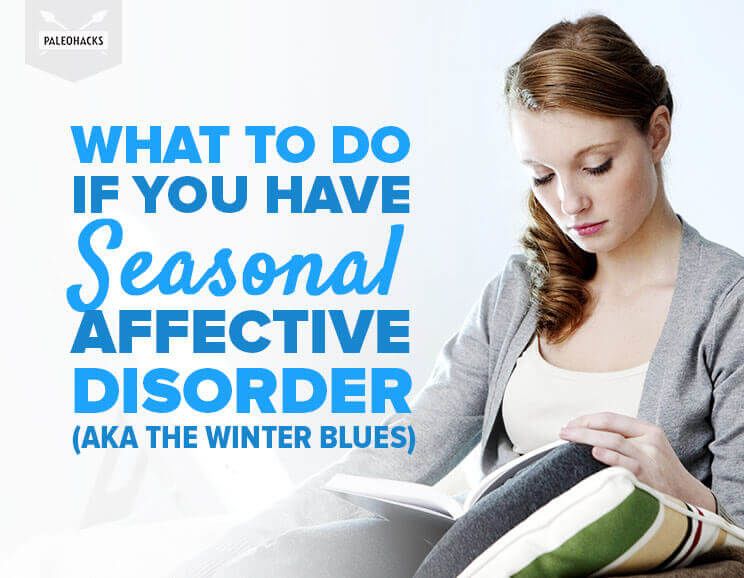






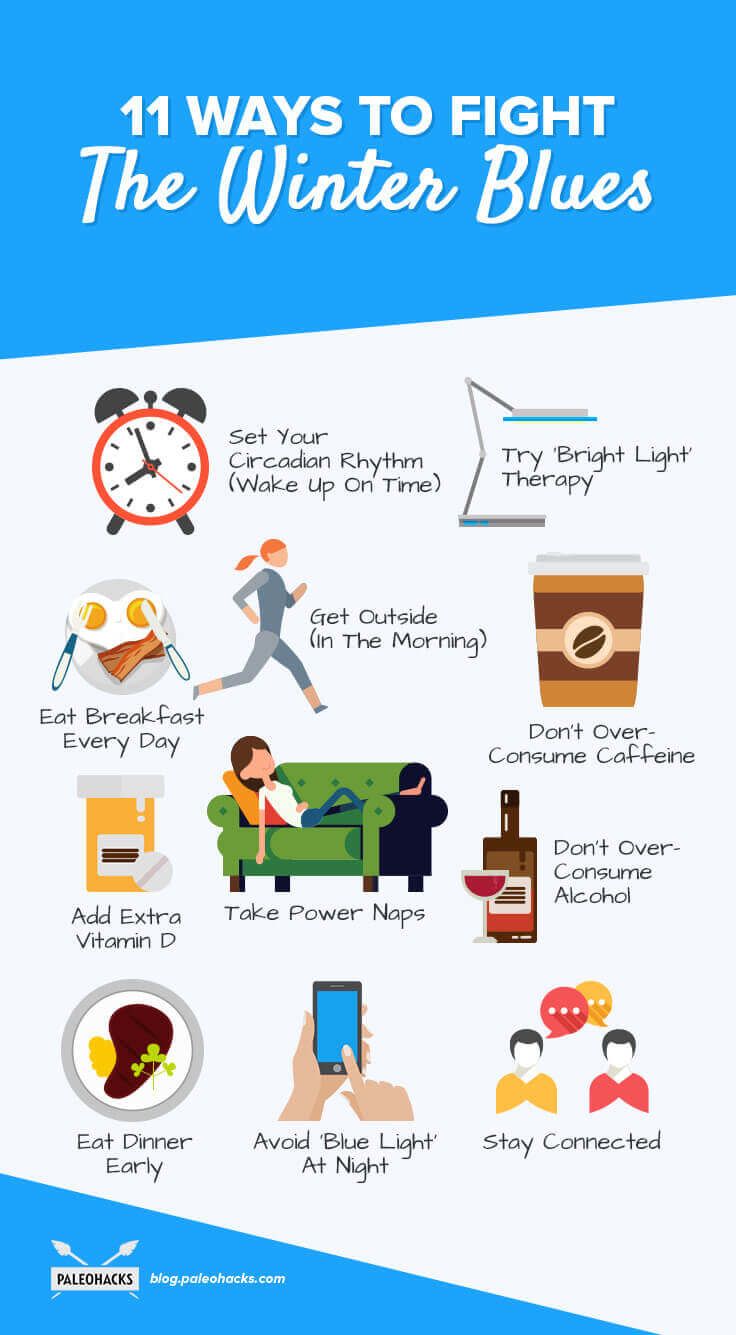
 Mashed Garlic Cauliflower and Meatballs Smothered in Gravy
Mashed Garlic Cauliflower and Meatballs Smothered in Gravy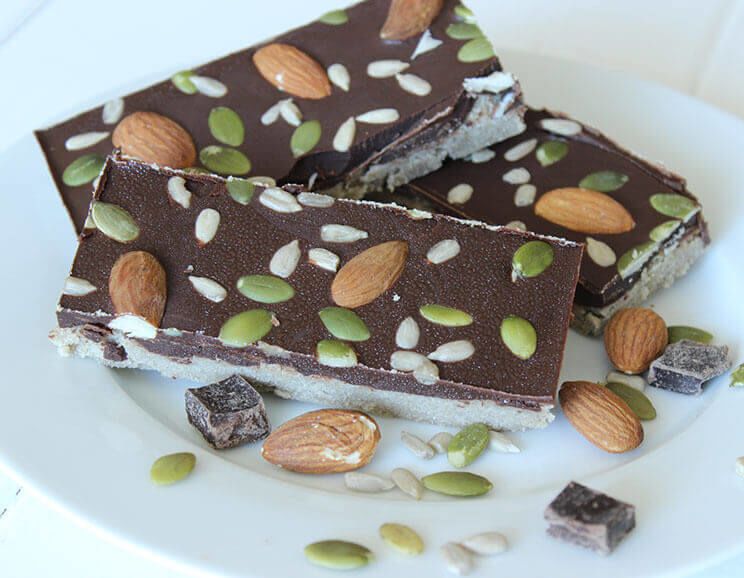



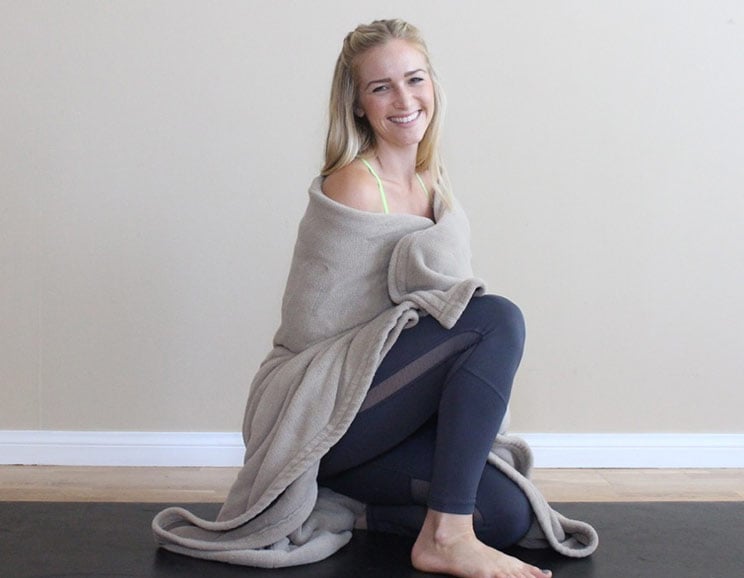
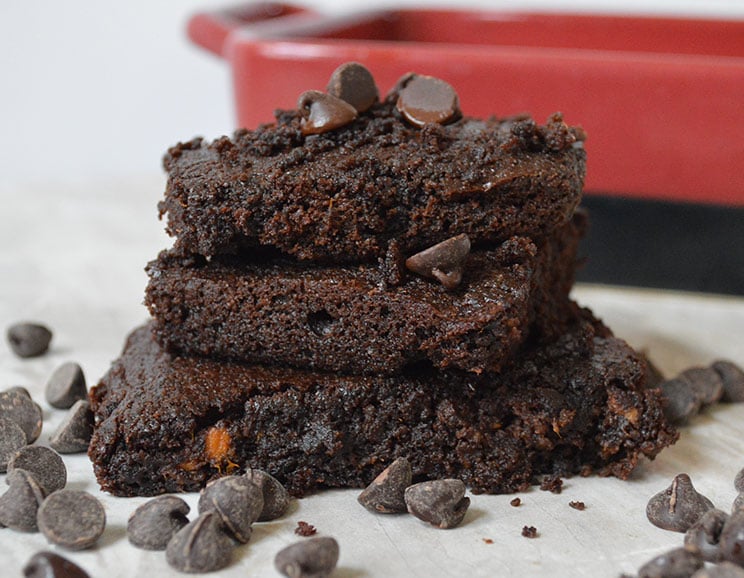


Show Comments